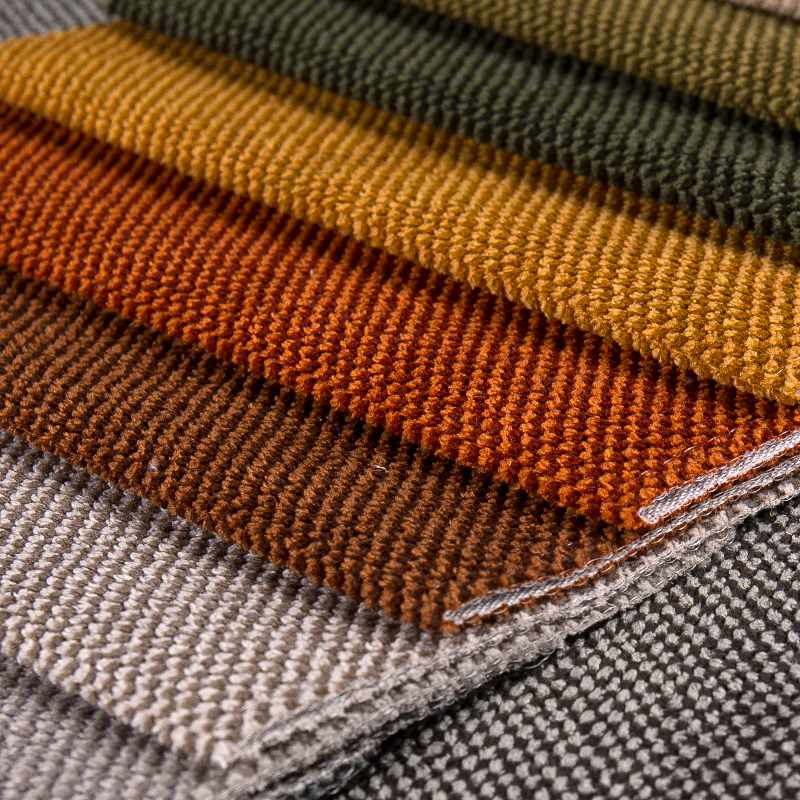Feb 08, 2025
Polyester knit fabrics can experience pilling, which is the formation of small, tangled balls of fibers on the fabric's surface. This is particularly a concern for fabrics that are subject to frequent friction, such as those used in sofas. Here’s how polyester knit fabrics typically perform in terms of pilling, and some measures to minimize this issue:
Performance of Polyester Knit Fabrics in Terms of Pilling:
Tendency to Pill: Polyester is relatively resistant to pilling compared to natural fibers like cotton or wool. However, it is not immune to pilling, especially in fabrics that have lower fiber strength or are loosely knitted.
Friction-Related Issues: Pilling is often caused by friction during normal use (e.g., sitting, moving, or rubbing against other materials). Sofas with polyester knit upholstery are prone to pilling in high-contact areas like armrests, seat cushions, and backrests.
Fiber Quality: The quality of the polyester fibers (e.g., denier, filament vs. staple fiber) plays a significant role in whether or not the fabric will pill. Low-quality or shorter fibers are more likely to form pills.
Measures to Minimize Pilling:
High-Quality Polyester:
Use Longer Fibers: Choosing polyester fabrics made from longer, continuous filament fibers rather than shorter staple fibers can help reduce the risk of pilling. Longer fibers are more durable and less likely to break off and form pills.
Higher Denier Count: Fabrics with a higher denier count (which refers to the thickness of the fibers) tend to be more durable and less prone to pilling.
Proper Fabric Treatment:
Anti-Pill Treatments: Some polyester knit fabrics are treated with anti-pilling finishes or coatings that help prevent the formation of pills. This can involve chemical treatments that smooth the fibers or bind them together to reduce friction.
Microfiber Technology: Using microfiber polyester, which has finer fibers, can also help reduce pilling, as these fabrics tend to be more tightly woven and resistant to abrasion.

Regular Maintenance:
Shaving or Lint Removal: Using a fabric shaver or lint roller can help remove pills when they begin to form, preventing them from becoming embedded in the fabric.
Gentle Cleaning: Washing polyester knit fabrics with a gentle cycle and avoiding abrasive laundry detergents or fabric softeners can help preserve the fabric's integrity and minimize the formation of pills.
Fabric Construction:
Tighter Knits: Fabrics with a tighter knit structure are less prone to pilling because they are more compact and resistant to the forces that cause pilling.
Smooth Weaves: Fabrics that have a smooth finish, as opposed to fuzzy or loose-knit textures, can reduce the likelihood of pilling.
Proper Upholstery Care:
Avoid Excessive Friction: Minimizing friction by using slipcovers or rotating cushions can reduce wear in high-contact areas, ultimately helping to prevent pilling.
Positioning and Usage: Positioning the sofa in a way that reduces stress on specific areas can also help reduce the chances of pilling due to repeated rubbing or movement.
Fabric Blends:
Polyester Blends: Polyester knit fabric blends, such as those mixed with nylon or spandex, may offer additional strength and resistance to pilling, as these blends improve durability while maintaining the fabric’s appearance.